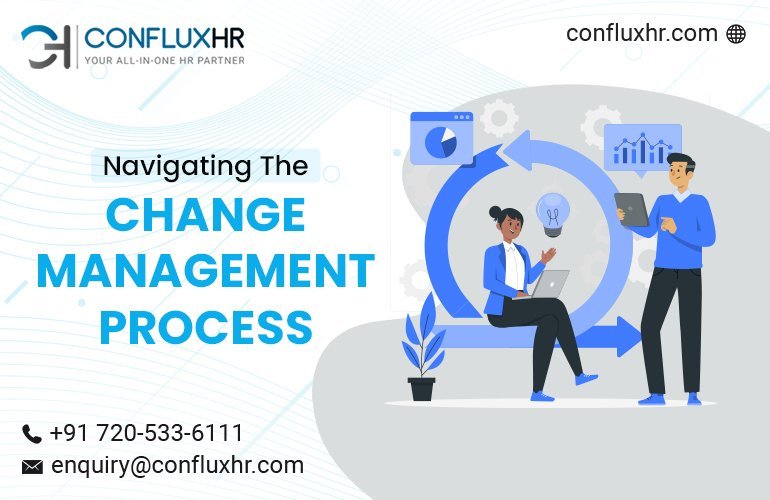For mid-sized businesses, streamlining HR processes is crucial. But ConfluxHR’s HRMS offers a treasure trove of benefits beyond just increased efficiency. Let’s delve into some of the hidden gems you might not have considered:
Employee Engagement Powerhouse:
A happy and engaged workforce is vital for business success. ConfluxHR’s HRMS fosters engagement in several ways. Employee self-service portals empower staff to manage tasks like leave requests and access paystubs independently, boosting autonomy and satisfaction.
Furthermore, our platform facilitates a culture of recognition through features like online kudos and performance reviews. Employees feel valued when their contributions are acknowledged, leading to increased engagement and motivation.
Compliance Guardian:
Maintaining compliance with ever-changing HR regulations can be a challenge. ConfluxHR’s HRMS acts as your compliance guardian. Our software automates tasks like tracking required training certifications and ensuring adherence to leave policies. This minimizes the risk of non-compliance and potential fines, saving you time, money, and headaches.
Risk Management Made Easy:
Mitigating risk is essential for any business. ConfluxHR’s HRMS strengthens your risk management practices. Our platform provides a centralized repository for employee records, minimizing the risk of data breaches or loss of important information. Additionally, features like performance management tools can help identify potential issues early on, allowing you to take proactive measures and mitigate risk.
Data-Driven Decision Making:
Informed decision-making is key to success. ConfluxHR’s HRMS empowers you with valuable data and insights. Our platform gathers and analyzes HR data, providing reports on trends in employee performance, absenteeism, and turnover. These insights can be used to identify areas for improvement, optimize workforce planning, and make strategic decisions that drive positive results for your business.
Empowering HR Professionals: A Focus on Strategic Initiatives
Many HR professionals in mid-sized businesses find themselves juggling multiple tasks and wearing many hats. ConfluxHR’s HRMS acts as a force multiplier, freeing up valuable time for HR to focus on more strategic initiatives.
-
Automated Workflows: Repetitive tasks like payroll processing, leave request approvals, and new hire onboarding can be automated within ConfluxHR’s HRMS. This eliminates manual work and the risk of errors, allowing HR professionals to dedicate their time to more strategic activities like talent management, workforce planning, and employee relations.
-
Data-Driven Insights for Strategic Decision Making: As mentioned earlier, ConfluxHR’s HRMS provides valuable data and reports. HR professionals can leverage these insights to make data-driven decisions that support business goals. Imagine being able to identify high-performing employees with the potential for leadership roles or pinpoint skills gaps that are hindering project progress. With ConfluxHR’s data, HR can make informed recommendations and develop strategic programs to address these needs.
-
Improved Communication and Collaboration: ConfluxHR’s HRMS fosters improved communication and collaboration within the HR department and across the organization. The platform provides features like internal messaging, discussion boards, and document sharing. This streamlines communication, keeps everyone informed, and facilitates collaboration on HR initiatives.

-
Improved Employee Engagement and Retention: A happy and engaged workforce is a productive workforce. ConfluxHR’s HRMS fosters a positive work environment through features that empower employees and recognize their contributions. This leads to higher employee engagement and retention, reducing costly turnover.
-
Enhanced Compliance: ConfluxHR’s HRMS automates tasks and ensures adherence to HR regulations, minimizing the risk of non-compliance and potential legal issues.
-
Reduced Risk: ConfluxHR’s platform safeguards sensitive employee data and empowers proactive risk management through features like performance management tools.
-
Data-Driven Decision Making: Informed decisions are key to success. ConfluxHR’s HRMS equips HR professionals with valuable data and insights to make strategic decisions that drive positive business outcomes.
-
Empowered HR Professionals: ConfluxHR’s HRMS frees up HR professionals’ time from administrative tasks, allowing them to focus on more strategic initiatives that contribute to the organization’s success.
Ready to unlock the hidden gems of HRMS for your mid-sized business? Contact ConfluxHR today and see how our innovative platform can empower your organization!












